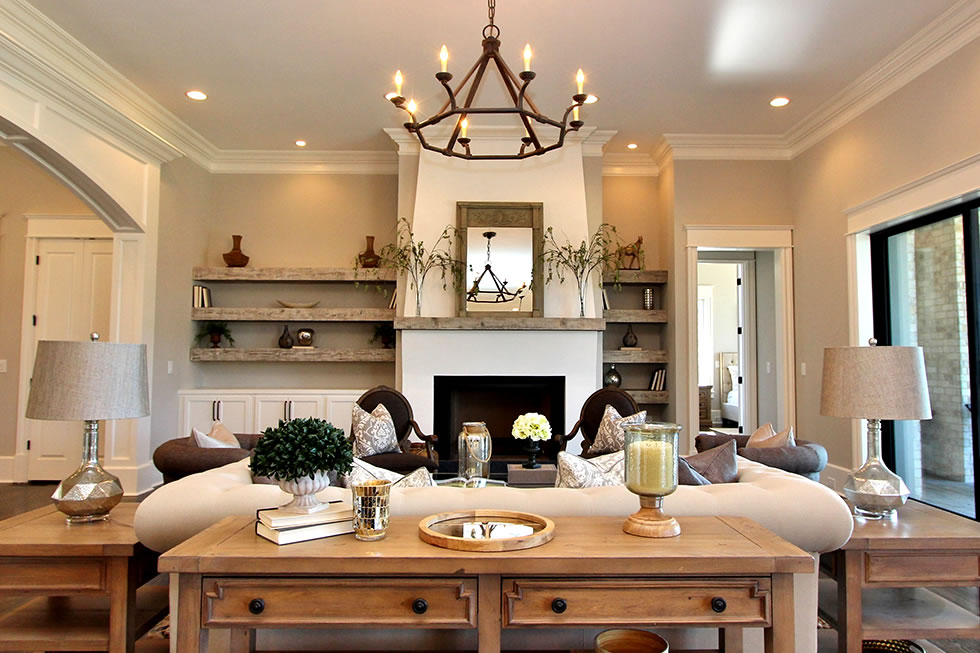
Priorities change. More home owners today seek convenience and safety as two of their top buying considerations. For example, when choosing neighborhoods, Millennials put a premium on convenience, wanting an easy commute or walkable access to employment centers, shopping, fitness and recreational amenities. On the other end of the spectrum, some Boomers are giving up on suburban homes, also heading to urban downtowns, from large cities to smaller towns or villages. And both groups desire low-maintenance, energy-efficient homes and seek budget-minded solutions, including smart-home features that conserve energy, i.e. monitor use of gas, electric and water usage.
And there are a variety of ways to achieve these goals. By adding smart-home devices, homeowners now have help with performing home tasks. They can also monitor what’s happening at home from anywhere via smart-home apps. Many homeowners find it helpful and amusing to have a virtual assistant—like Amazon’s Alexa or Google’s Home. With a brief command they can turn on the sound system or TV, even while their hands are covered in flour from making a Buche de Noel for the Christmas holiday, or frying latkes for Hanukkah, the Festival of Lights. The possibilities seem almost endless as an abundance of these home-tech tools—some label them as "toys" – keep hitting the market.
There’s a downside, however. Having so many choices makes it harder to decide which ones to purchase. The Arlo Smart Chime Speaker, for example, retails for just under $50, but add this and that, and you might be surprised at how much you’ve spent on these smart-home devices. We suggest you carefully read online reviews and consider items that appear easiest to use or program, and work well with other smart devices in your home – let’s say, "speak the same language" – so all your smart-home devices function together without a glitch. Many companies list this information on their websites. For example, both Alexa, and Google’s Assistant can be used to control many Samsung appliances such as refrigerators, dishwashers, washers, dryers, and robotic vacuums. Know this before you go to buy. A helpful article to read about connectivity can be found on Consumer Reports.
If either of us wanted to make our homes smarter – since we’re absolute newbies to this trend and we live in older, non-smart dwellings – we’d be most interested in a doorbell video to see who’s at the door (Arlo doorbell or Ring Video Doorbell), a lock that can be programmed to open (August smart lock or Schlage Sense smart lock), a light system that would turn lights on and off, dim them to conserve energy, offer safety to go to the bathroom in the middle of the night (Philips Hue lighting), or allow us to return to our home with entry lights on after sundown.
For those of us who aren’t DIYers or very tech savvy, we recommend hiring a tech consultant who’s connected with a store or has an independent consultancy. This idea appeals greatly to us. Such specialists can remove the hassle of searching for the best smart-home products or setting them up properly. The hourly or per-project charge might be very worthwhile to get started on the right foot, so to speak.
New Homes/Homebuilders: More new homes are being pre-wired for wireless and smart-home devices. Lennar, the country’s largest home builder, integrates a high-tech wireless system into their new home models allowing devices like lights, locks and thermostats to operate effortlessly. Lennar will also send a trained staff member from Amazon’s support team to help their new home customers who need on-site assistance.
Loudermilk Homes, custom builder in Atlanta also pre-wires its luxury homes. Loudermilk homes are built with new technology in mind, so customers don’t have to cut into walls or add wiring/cables later, says Sherwin Loudermilk, who founded the company six years ago. "Everyone thought we were nuts back then, when we were installing Honeywell systems to control lights and thermostats," he says. But since then, he has constructed about 150 smart homes that do far more for home owners because the company has installed piping for both low- and high-voltage wiring from the basement up to through the attic to allow clients to easily add features or upgrade to the next generation of systems. "If a home owner decides they want speakers in their second-floor bedroom or solar panels on their roof, those are easy additions," Loudermilk says. He has gone the hard-wired route since he believes devices and systems work more consistently and easily that way, he says. Elements of artificial intelligence are starting to appear as systems can be programmed to "learn" home owner behaviors and preferences and respond accordingly. "Blinds will open and close at certain times of the day depending on the amount of light or darkness, without the home owner telling this voice-activation device to do this or that," he says.
Perhaps, the more pertinent question is how much technology has impacted sales? "That’s tough to quantify," Loudermilk says. It’s tough to quantify the exact correlation, but what is known is that the tech features represent the wave of the future and seem to motivate buyers as a cutting-edge amenity, just as gathering-hub kitchens, spa-style master bathrooms and outdoor garden "rooms" have done in recent years.
Finally, as more high-tech options become available and more affordable, home builders are likely to offer tech solutions whether they build production or custom homes, to differentiate their products from competitors, says Brian Perreault, chief operating officer of Barrett’s Technology in Naperville, IL, whose firm will custom program smart-home products and systems – a company that’s experiencing a growing demand for their services.
Photo Credit: Loudermilk Homes
